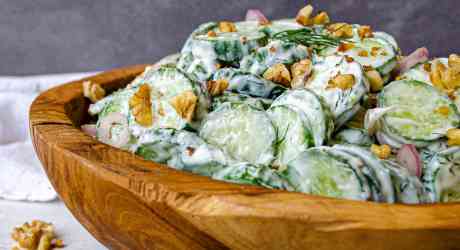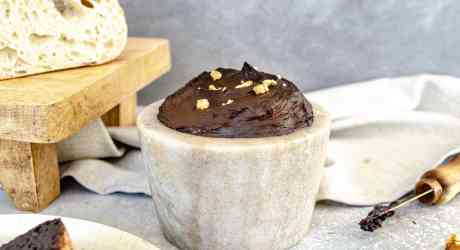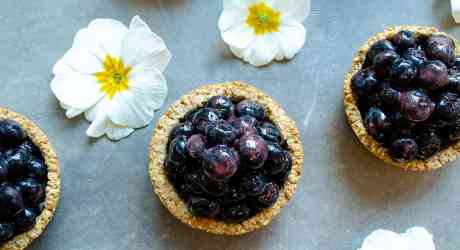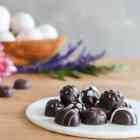Fresh Stone Fruit Salsa
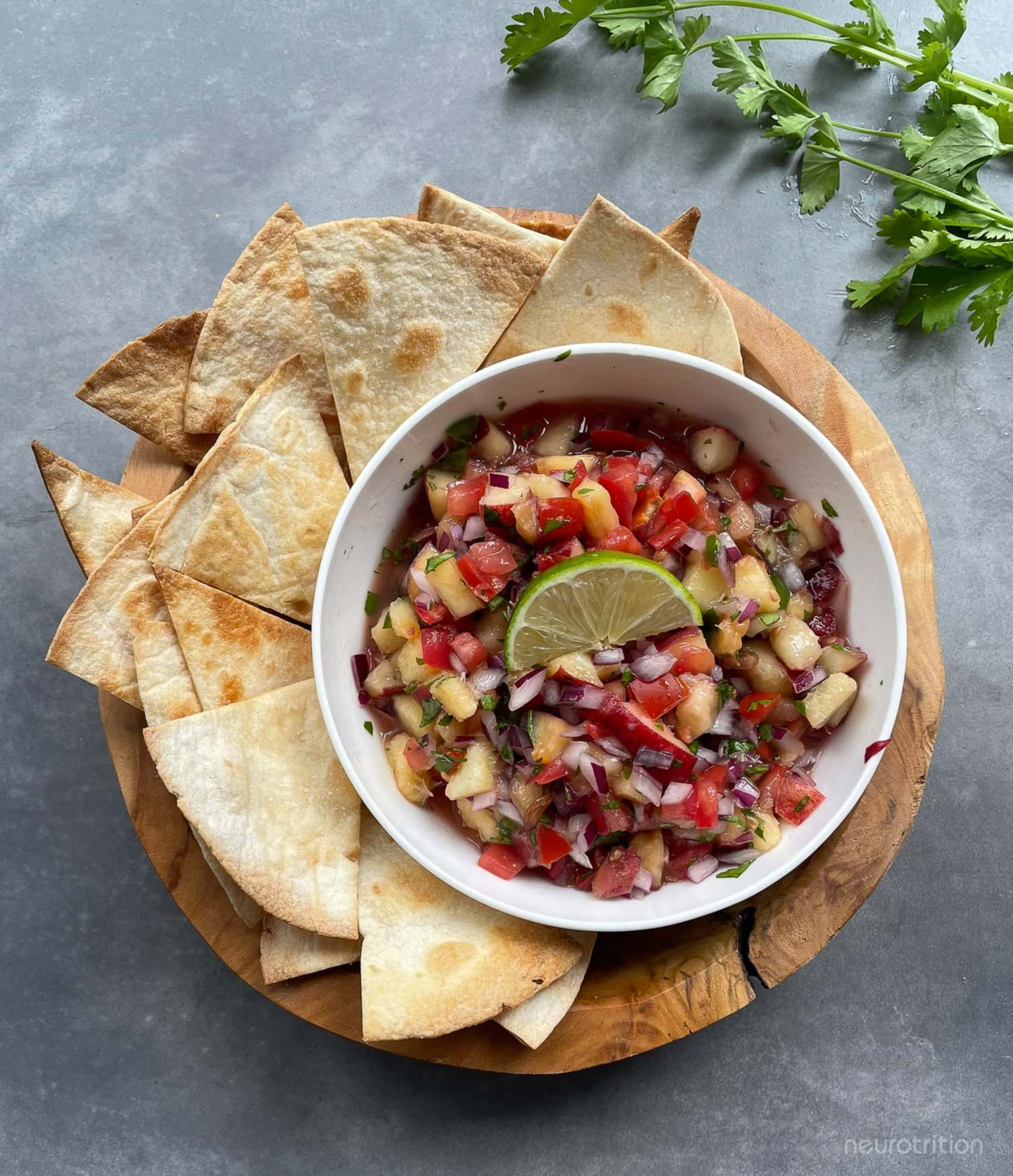
How can we Summer-ify salsa? By adding some beautifully brainiac stone fruits, of course!
We began with the classic salsa starters: tomato, red onion, cilantro, lime and jalapeño. And then we added a nectarine and two white peaches to take this salsa into its Summer era.
Peaches are used traditionally in Ayurvedic medicine to balance the nervous system, and their nutritional analysis shows that they are high in antioxidants including vitamins A, C and beta-carotene that fight free radicals (which are implicated in neurological disease). Fun fact: white peaches not only have a softer, more delicate floral flavour (due to their reduced acidity), they also have more antioxidants.
Peaches are also high in folate, whose clinical effects on depressive symptoms and mood regulation have been studied. Their fuzzy skin provides over double the number of antioxidant polyphenols than the flesh, and the peach peel has been shown to protect against free radical damage in kidney, liver and brain cells of rodents. So always enjoy peaches with the skin for the best protection!
Nectarines are a fuzz-free, smooth-skinned type of peach that boast a similar nutritional profile to peaches. If we dive deep into the nutritional data, we see that both peaches and nectarines have vitamins A, C, K and B3 along with the minerals magnesium and potassium, carotenoids (ie. plant pigments) like beta-carotene, lutein and zeaxanthin. But whereas peaches have more vitamins A, C and lutein, nectarines have more potassium, magnesium, phosphorus and vitamin B3.
This salsa is low fat, and if you know me then you know how much I love healthy brain-boosting fats! I love adding this salsa on top of my favourite cooked white fish halibut or black cod (also known as sablefish), or mixing this salsa with mashed avocado in a 1:1 ratio for a fresh, flavourful guacamole.
Pita* chips:
- 4 homemade** or store-bought soft tortilla shells
- 2 Tbsp avocado oil
- 1/2 tsp sea salt
Salsa:
- 1 medium nectarine, diced in 1/4 inch pieces
- 2 medium white peaches, diced in 1/4 inch pieces
- 2 Roma tomatoes, diced small
- 1/2 medium red onion, diced as small as possible
- 2 Tbsp cilantro, finely chopped
- 1 lime, juiced
- 1 jalapeño, seeds removed, diced small
- Set oven to 400F.
- Begin by cutting each tortilla in 8 slices.
- Using a pastry brush, brush both sides of each slice with avocado oil.
- Lay each slice onto a cookie sheet, sprinkle each slice with sea salt and place in oven.
- Cook for 5-6 minutes, flipping each slice after 2-3 minutes.
- Combine the diced nectarine, peaches, tomatoes, red onion, cilantro, lime juice, and jalapeño; stir to mix well and place in the fridge for 2-4 hours to allow the flavours to blend.
* Making the pita chips is completely optional, any kind of corn chip or pita chip will work.
** Looking to make your own tortillas? Here’s our homemade corn tortilla recipe!
Try adding this salsa on top of your favourite cooked white fish, or mix this salsa with mashed avocado in a 1:1 ratio, for a fresh flavourful guacamole.
Store salsa in airtight container in the fridge for 1-2 days.

Peaches:
- Don’t forget the fuzz! Peach peel has antioxidant and anti-inflammatory effects conferring protection against cytotoxicity and oxidative stress on rodent liver, kidney and brain cortex tissue slices.
Tomatoes:
- A randomized, double-blind, placebo-controlled study (which is the gold standard in scientific research) has shown that antioxidant-rich tomatoes modulate gut microbiota in overweight and obese adults.
- References
-
- Gasparotto, J. et al. 2014. Effects of different products of peach (Prunus persica L. Batsch) from a variety developed in southern Brazil on oxidative stress and inflammatory parameters in vitro and ex vivo. Journal of Clinical Biochemistry and Nutrition, 55(2), 110-119.
- Rehman, A. et al. 2023. A water-soluble tomato extract rich in secondary plant metabolites lowers trimethylamine-n-oxide and modulates gut microbiota: a randomized, double-blind, placebo-controlled cross-over study in overweight and obese adults. The Journal of Nutrition, 153(1), 96-105.
